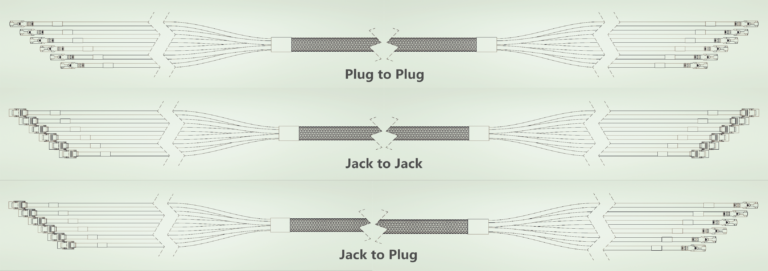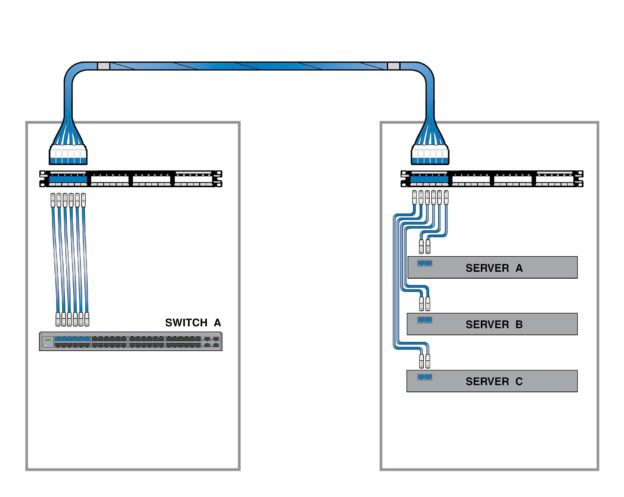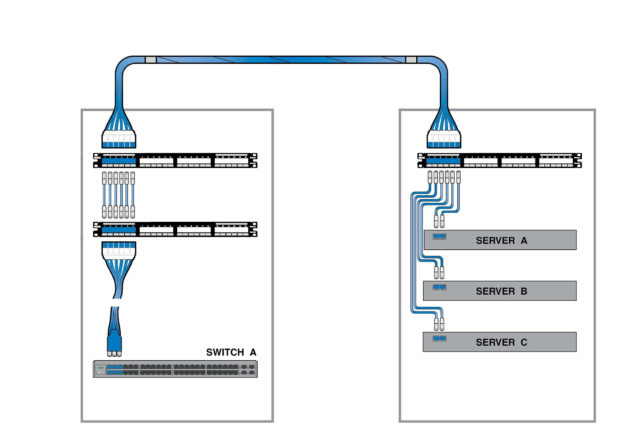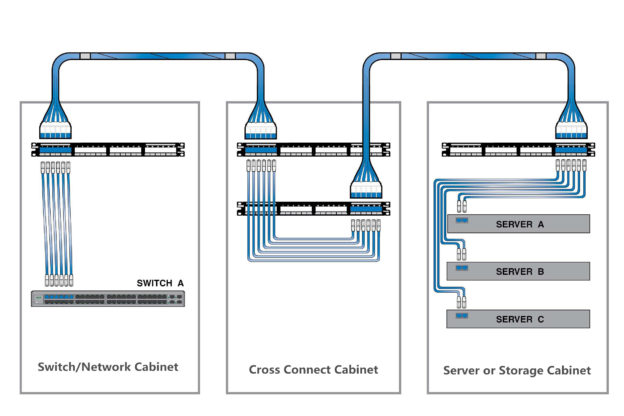Pre-terminated backbone copper cable and method of use

Pre-terminated backbone copper cable and method of use
High-density cabling products and standard modular designs play an important role in today's data centers and server rooms. This also happens with copper cabling, and during the installation of network cabling, traditionally, cable installers may choose to terminate category cables themselves. However, this slows down the installation.

Additionally, field-terminated copper cables such as Cat5, Cat5a, and Cat6 can cause failure if not properly terminated. Since there may be hundreds or thousands of RJ45 connectors that need to be terminated with twisted copper wire, there is a high potential for failure and material waste. To reduce installation time and risk of failure, pre-terminated copper backbone cables are being introduced into data centers.
So, what is a copper trunk and how is it used?
What is pre-terminated trunk copper cable?
Simply put, a copper backbone cable consists of a single copper cable that is factory pre-terminated. Cable installers can install copper cables directly without additional terminations. Since the cables are bundled, there is no need to worry about cable clutter.
According to different requirements in practical applications, suppliers often provide a variety of copper backbone cables. To select the proper copper backbone for a specific application, three important factors need to be considered: The first is the type of copper cable. Copper trunk cables using Cat5, Cat5e, Cat6 and Cat7 cables are all commercially available. The second factor is the number of cables. The most commonly used copper cables usually have 6 or 12 cables. Higher or lower cable counts are also available. The third is the termination type for copper trunk cable branches. Branches are usually terminated with RJ45 plugs or jacks, and some copper trunks may be left unterminated at one or both ends for customer DIY according to actual application.
The following diagram shows the three most common types of copper backbone cables: plug-to-plug copper trunk, jack-to-jack copper trunk, and jack-to-plug copper trunk.

How to use backbone copper cable?
The use of backbone copper cables can effectively reduce installation time and improve the performance of copper networks. In addition, when used properly, they can provide an easy-to-manage cabling environment. How to make full use of pre-terminated backbone copper cables? During the cabling process, usually the backbone cables should be cross-connected for interconnection work before being connected to the target equipment. Three situations that are common when using copper trunk cables for copper cabling are shown below.
Dual Connector Interconnect
In the first case (pictured below), a 6-pin to 6-pin copper backbone cable is used to connect three servers to a single switch. Copper terminal blocks are used on each end of this connection. One is near the switch side and the other is near the server side. Copper jumper wires are used to interconnect these devices.

triple cross connect
Cross-connects are also common in data centers. The figure below shows the basic routing structure of the three-connection crossover wiring. In this network, three RJ45 patch panels are used. This structure is like the dual connector interconnection mentioned above. It just adds a cross-connect process on the switch side.

Quad Connect Cross Connect
The following shows a relatively complex network structure, which is a commonly used four-connection cross-connect. This type of connection usually requires a distribution area, usually a cabinet. In this case, two copper backbone cables are used as permanent cables. The cabinet uses patch cords to connect devices. Use four terminal strips. There is a separate cabinet for cross-connects.

Summarize
Cabling in large data centers or high-density environments is easier and faster with pre-terminated copper backbone cables. It also simplifies cable management in the data center. Currently, there are many suppliers of copper backbone cables. Some can also provide customized backbone copper cables according to data center applications to reduce material waste and help build a cleaner and tidy wiring environment.